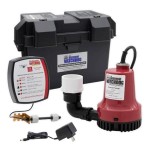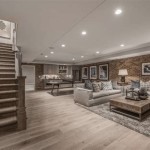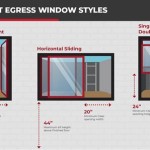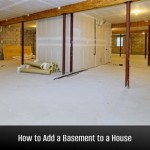Narrow Lot Lake House Plans with Walkout Basement and Garages
Designing a lake house presents unique opportunities and challenges, especially when constrained by a narrow lot. Optimizing space while maximizing lake views and recreational potential requires careful planning and consideration of several factors. Successfully integrating a walkout basement and garage into a narrow lot design further complicates the process, demanding innovative architectural solutions and a deep understanding of site-specific conditions. This article explores the key elements involved in developing narrow lot lake house plans with walkout basements and garages, highlighting critical design considerations and potential solutions.
The allure of lakefront property often comes with limitations, particularly in the form of narrow lots. These lots, while offering direct access to the water, present architects and homeowners with the task of creating spacious and functional living spaces within a confined footprint. The desire for a walkout basement, which seamlessly connects the indoor living space with the outdoor environment, and a garage for vehicle and recreational equipment storage, adds another layer of complexity to the design process. Careful planning is essential to ensure that the resulting structure is aesthetically pleasing, functional, and compliant with local building codes and regulations.
Proper site analysis is the foundation of any successful building project, and this is particularly true when dealing with narrow lots and challenging topography. This involves a comprehensive assessment of the lot's dimensions, orientation, slope, soil conditions, and any existing vegetation or structures. Understanding the natural contours of the land is crucial for determining the feasibility of a walkout basement and the optimal placement of the garage. The orientation of the lot relative to the sun will influence the placement of windows and outdoor living spaces to maximize natural light and minimize heat gain. Soil testing is essential to ensure the stability of the foundation and the suitability of the soil for construction. Furthermore, local zoning regulations and building codes must be thoroughly reviewed to ensure compliance with setback requirements, height restrictions, and other applicable standards. Ignoring any of these aspects can lead to costly delays and modifications during the construction process.
Maximizing Space on a Narrow Lot
The primary challenge in designing a narrow lot lake house is maximizing the available space without compromising functionality or aesthetics. This requires careful consideration of the floor plan, the use of vertical space, and the integration of indoor and outdoor living areas. One strategy is to utilize a multi-story design, stacking living spaces vertically to minimize the building's footprint. This can be achieved through the use of open floor plans that create a sense of spaciousness and allow for natural light to penetrate deep into the interior. Another technique is to incorporate built-in storage solutions, such as bookshelves, cabinets, and window seats, to maximize storage space without adding bulk to the structure.
The design of the roof can also play a significant role in maximizing space. A steep roof pitch can create additional usable space in the attic, which can be converted into a bedroom, office, or recreational area. Dormers can be added to the roof to increase headroom and allow for natural light to enter the attic space. Furthermore, the placement of windows and skylights should be carefully considered to maximize natural light and ventilation throughout the house. Large windows facing the lake can provide stunning views and create a sense of connection to the natural environment. Skylights can be used to bring natural light into areas that are otherwise dark or poorly lit.
Outdoor living spaces are an essential component of a lake house design. Decks, patios, and balconies can extend the living space outdoors and provide opportunities for relaxation and entertainment. On a narrow lot, it is important to carefully consider the placement and size of these outdoor spaces to ensure that they do not overwhelm the property. Vertical landscaping, such as trellises and climbing plants, can be used to create privacy and add visual interest to the outdoor spaces. Furthermore, the integration of outdoor kitchens and fireplaces can enhance the functionality and enjoyment of the outdoor living areas.
Integrating a Walkout Basement
A walkout basement is a highly desirable feature for a lake house, as it provides direct access to the lakefront and creates opportunities for indoor-outdoor living. However, integrating a walkout basement into a narrow lot design requires careful consideration of the site's topography and the placement of the foundation. Ideally, the lot should have a natural slope that allows for the basement to be partially or fully exposed on the lake side. This eliminates the need for extensive excavation and grading, which can be costly and disruptive.
The design of the walkout basement should be carefully integrated with the overall design of the house. The basement can be used for a variety of purposes, such as a recreation room, a home theater, a guest suite, or a storage area. The placement of windows and doors should be carefully considered to maximize natural light and ventilation. A patio or deck can be added outside the walkout basement to create an outdoor living space that is directly accessible from the basement. The foundation walls of the walkout basement must be properly waterproofed to prevent water damage and ensure the longevity of the structure. A drainage system should also be installed to divert water away from the foundation.
In situations where the lot is relatively flat, creating a walkout basement may require more extensive excavation and grading. In these cases, it is important to consult with a geotechnical engineer to ensure that the soil is stable and that the foundation can support the weight of the structure. Retaining walls may be necessary to prevent soil erosion and maintain the slope of the land. The cost of constructing a walkout basement on a flat lot can be significantly higher than on a sloped lot, so it is important to carefully consider the budget and the overall goals of the project before proceeding.
Incorporating Garages into the Design
The integration of a garage into a narrow lot lake house design presents unique challenges. The limited space often necessitates creative solutions to accommodate vehicles and other storage needs. One option is to build a detached garage, which can be placed at the rear of the property or on the side, depending on the lot's configuration and local zoning regulations. A detached garage can be designed to complement the architectural style of the house and can even incorporate features such as a workshop, a storage loft, or a guest suite.
Another option is to integrate the garage into the main structure of the house. This can be achieved by building a garage in the basement, with access from the driveway. This solution saves space and provides direct access to the house from the garage, which can be particularly convenient during inclement weather. However, it is important to ensure that the garage is properly ventilated to prevent the build-up of fumes and odors in the house. Another option is to build an attached garage that is integrated into the side of the house. This solution requires careful planning to ensure that the garage does not detract from the overall aesthetics of the house. The design of the garage should complement the architectural style of the house and should be scaled appropriately to avoid overwhelming the property.
Consideration should be given to the size of the garage and the number of vehicles that need to be accommodated. A single-car garage may be sufficient for some homeowners, while others may require a two-car or even a three-car garage. In addition to vehicles, the garage may also need to accommodate recreational equipment, such as boats, jet skis, and bicycles. Ample storage space should be incorporated into the garage to keep it organized and clutter-free. This can be achieved through the use of shelving, cabinets, and overhead storage racks. The placement of the garage doors should be carefully considered to ensure that they do not obstruct views or create traffic congestion on the property. Furthermore, the design of the driveway should be carefully planned to ensure that it is safe and easy to navigate.
Sustainable design principles should also be incorporated into the design of the garage. This can include the use of recycled materials, energy-efficient lighting, and solar panels. The garage can also be designed to collect rainwater, which can be used for irrigation or other purposes. By incorporating sustainable design principles, the garage can be both functional and environmentally friendly.
Successfully designing a narrow lot lake house with a walkout basement and garage requires a thorough understanding of site conditions, innovative architectural solutions, and careful consideration of the homeowner's needs and preferences. By maximizing space, integrating the walkout basement seamlessly, and incorporating the garage thoughtfully, it is possible to create a beautiful and functional lake house that takes full advantage of its unique setting.

Sloped Lot House Plans Walkout Basement Drummond

Dream Lake House Plans With Walkout Basement

Walkout Basement House Plans To Maximize A Sloping Lot Houseplans Blog Com

Cottage Style House Plan 4 Beds 3 5 Baths 3577 Sq Ft 928 354 Houseplans Com

Laurelwood 4 Bedroom Lake Style With Walkout Basement House Plan 10081

Walkout Basement Cottage Lake Style House Plan 9857

Laurelwood 4 Bedroom Lake Style With Walkout Basement House Plan 10081

Lake Home Plans

Mountain Home House Plan With Walkout Basement Max Fulbright Designs

Best Lake House Plans Ideas And Home Design Architecturesstyle
Related Posts







